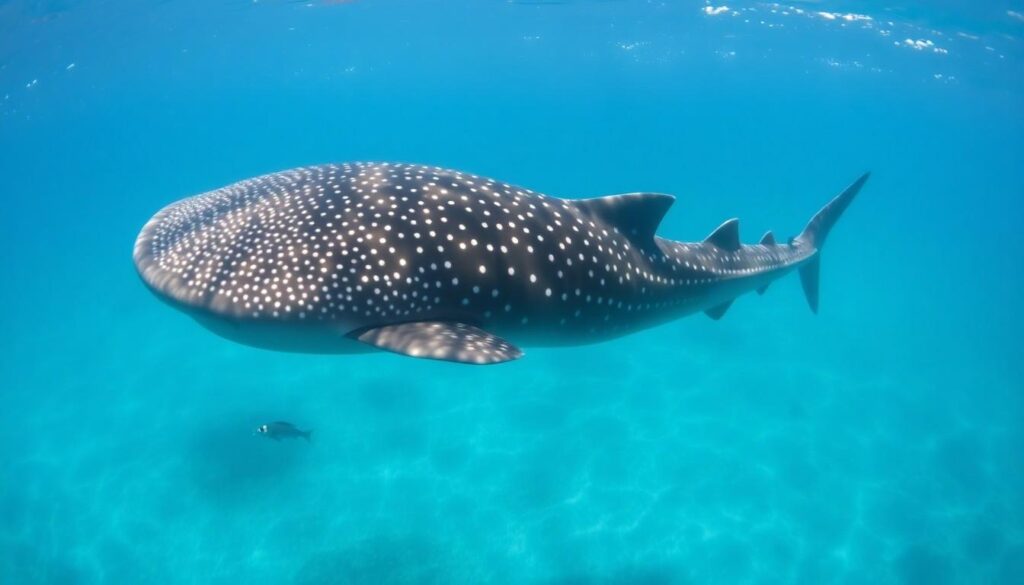If you’ve ever marveled at the majestic whale shark, you might wonder whether it’s a whale or a shark. Despite its name, the whale shark is actually a species of shark, specifically the largest fish in the ocean. These gentle giants can grow up to 40 feet long and are known for their distinctive spotted patterns.
Unlike whales, which are mammals, whale sharks belong to the elasmobranch family, sharing characteristics with other sharks. They breathe through gills and are cold-blooded, making them quite different from their mammalian namesake. Understanding this fascinating creature helps clarify the common misconceptions surrounding its classification. So let’s dive deeper into the world of whale sharks and explore what truly sets them apart from whales.
Understanding Whale Sharks
Whale sharks are the largest fish species on Earth. With their unique characteristics and specific habitats, it’s essential to understand what sets them apart from both whales and other shark species.
Definition and Characteristics
Whale sharks (Rhincodon typus) are classified as filter-feeding carpet sharks. Their notable features include:
| Feature | Description |
|---|---|
| Size | Can grow up to 40 feet (12 meters) in length |
| Weight | Can weigh over 20 tons |
| Skin | Covered in distinctive white and yellow spots |
| Mouth | Wide, spanning about 5 feet (1.5 meters) |
| Breathing Method | Uses gills to extract oxygen from water |
Their filter-feeding system allows them to consume plankton and small fish, setting them apart from predatory sharks. Unlike whales, they are cold-blooded.
Habitat and Distribution
Whale sharks inhabit tropical and warm-temperate seas. Their preferred environments include:
| Region | Description |
|---|---|
| Indo-Pacific Ocean | Commonly found in regions like the Philippines |
| Atlantic Ocean | Occasionally spotted off the coast of Brazil |
| Gulf of Mexico | Frequent visitors in areas like Belize |
These sharks often migrate seasonally to feeding grounds rich in food, showcasing their dependence on specific marine ecosystems. They favor coastal areas but can also be found in open waters, adapting to various oceanic conditions.
Comparing Whales and Sharks
Whales and sharks belong to different biological classifications despite some common traits. Understanding their classifications and physical distinctions helps clarify the unique position of whale sharks in the marine ecosystem.
Biological Classification
| Feature | Whale | Shark |
|---|---|---|
| Type | Mammal | Fish |
| Class | Mammalia | Chondrichthyes |
| Respiration | Lungs | Gills |
| Blood Temperature | Warm-blooded | Cold-blooded |
| Reproduction | Live birth | Egg-laying or live birth |
Whales fall under the class Mammalia, signifying that they are warm-blooded mammals that breathe air using lungs. In contrast, sharks, including whale sharks, belong to the class Chondrichthyes, which comprises cold-blooded fish. Whale sharks breathe using gills, similar to most other sharks.
Physical Differences
| Feature | Whale | Whale Shark |
|---|---|---|
| Size | Varies; up to 100 feet | Up to 40 feet |
| Skin | Smooth, hairless | Rough, dermal denticles |
| Diet | Carnivorous (varies by species) | Filter feeder (plankton) |
| Body Shape | Streamlined | Flattened head |
Whales exhibit diverse sizes and streamlined bodies that aid in their powerful swimming capabilities. Shark skin contains dermal denticles providing rough texture, while whale sharks are notably broader and feature a unique flat head. While most whales are carnivorous, whale sharks filter-feed on plankton and small fish, showcasing their distinct adaptations for survival in the marine environment.
The Nature of Whale Sharks
Whale sharks possess unique characteristics that distinguish them from other marine creatures. Their classification as sharks rather than whales is rooted in their anatomy and behavior.
Feeding Habits
Whale sharks are filter feeders, primarily consuming plankton, small fish, and crustaceans. They use their gills to sieve prey from the water. A typical feeding strategy involves the shark swimming with its mouth open, allowing water to flow in.
| Feeding Method | Description |
|---|---|
| Filter Feeding | Straining small organisms from water through gills. |
| Suction Feeding | Creating a vacuum to capture prey in its mouth. |
Their diet varies based on geographical location, but they have been documented consuming up to 2,000 pounds of food daily during peak feeding periods.
Behavior and Social Structure
Whale sharks exhibit solitary behavior but often gather in groups at rich feeding grounds. These gatherings happen seasonally, showing a tendency to congregate where food sources are abundant.
| Behavior Type | Description |
|---|---|
| Solitary | Typically found alone or in pairs. |
| Schooling | Can form temporary groups in nutrient-rich waters. |
Additionally, they display low aggression levels towards humans. Divers often swim alongside these gentle giants, indicating the whale shark’s calm demeanor.
Common Misconceptions
Misconceptions about whale sharks often arise from their name and characteristics. Understanding the facts helps clarify these misunderstandings.
The Name “Whale Shark”
The term “whale shark” can mislead many people into thinking it’s a whale. Though the name suggests a connection to whales, it’s important to recognize that whale sharks belong to the shark family and not to the class of mammals.
| Characteristic | Whale | Whale Shark |
|---|---|---|
| Classification | Mammal | Fish |
| Body Temperature | Warm-blooded | Cold-blooded |
| Breathing Method | Lungs | Gills |
| Size | Up to 100 feet | Up to 40 feet |
| Skin Type | Smooth | Rough with denticles |
Myths vs. Facts
Several myths surround whale sharks that cloud their true nature. Clearing up these myths aids in a better understanding of these creatures.
| Myth | Fact |
|---|---|
| Whale sharks are dangerous. | Whale sharks are gentle giants and pose little threat. |
| They are whales. | Whale sharks are the largest fish, not marine mammals. |
| They don’t filter feed. | Whale sharks filter feed on plankton, small fish, and crustaceans. |
| Whale sharks are solitary. | They can gather in groups during feeding periods. |
Clarifying these points fosters appreciation for whale sharks’ unique role in marine habitats.
Conclusion
Understanding the whale shark’s true nature enriches your appreciation for these incredible creatures. By recognizing that it’s a shark and not a whale you can dispel common myths and embrace the unique characteristics that set it apart in the ocean.
From its impressive size to its gentle feeding habits the whale shark plays a vital role in marine ecosystems. By learning more about these gentle giants you contribute to their conservation and help ensure their survival for future generations. So next time you hear about whale sharks remember they’re more than just their name—they’re a fascinating part of our ocean’s biodiversity.
Frequently Asked Questions
What is a whale shark?
Whale sharks are the largest fish in the ocean, reaching lengths of up to 40 feet. Despite their name, they are a species of shark, not a whale. They are generally known for their distinctive spotted patterns and cold-blooded nature, breathing through gills.
Where do whale sharks live?
Whale sharks inhabit tropical and warm-temperate seas around the world. Common locations include the Indo-Pacific Ocean, the Atlantic Ocean, and the Gulf of Mexico. They often migrate seasonally to specific feeding grounds, demonstrating their adaptability to various oceanic conditions.
How do whale sharks feed?
Whale sharks are filter feeders, consuming plankton, small fish, and crustaceans by filtering water through their gills. During peak feeding times, they can eat up to 2,000 pounds of food in a day, showcasing their incredible feeding abilities.
Are whale sharks dangerous to humans?
No, whale sharks are not dangerous to humans. They are gentle giants with low aggression levels. Many divers can swim alongside them, and their calm demeanor makes encounters safe and enjoyable.
How do whale sharks differ from whales?
Whale sharks are classified as fish in the class Chondrichthyes, while whales are warm-blooded mammals in the class Mammalia. Differences include their body temperature, breathing methods (gills vs. lungs), and size. Whales can reach up to 100 feet, whereas whale sharks max out at 40 feet.
What are the key characteristics of whale sharks?
Whale sharks are known for their large size, distinctive spotted skin, and filter-feeding habits. They have rough skin covered in dermal denticles and can weigh several tons, emphasizing their unique adaptation to marine environments.
Do whale sharks travel alone or in groups?
Whale sharks typically exhibit solitary behavior but often gather in groups during feeding periods. This tendency to congregate shows their social nature, especially in areas with abundant food sources.


